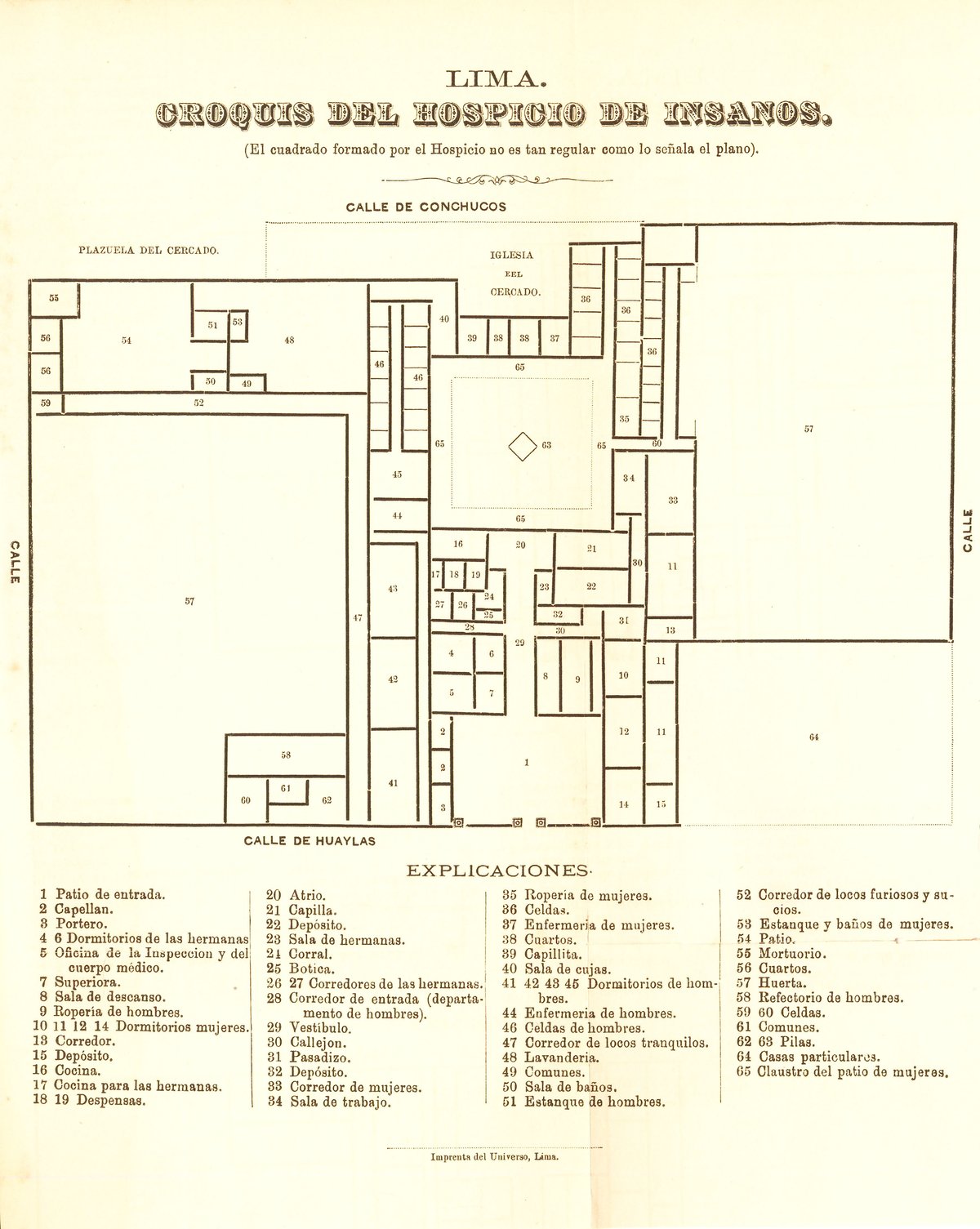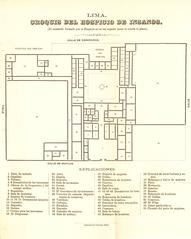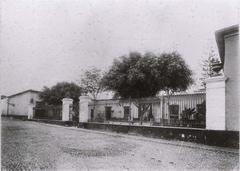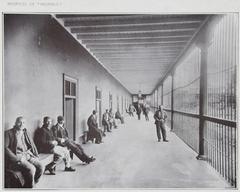
Hospital de la Misericordia, Lima, Peru: Visiting Hours, Tickets, and Historical Significance
Date: 15/06/2025
Introduction: A Historic Window into Lima’s Colonial and Medical Heritage
The Hospital de la Misericordia stands as a monumental testament to Lima’s colonial past and the evolution of healthcare in South America. Established soon after Francisco Pizarro founded Lima in 1535, the hospital played a pioneering role in charitable medicine and, notably, in the early development of psychiatric care. Though the original hospital no longer operates as a medical facility—its premises now serve as a police training school—the site remains an enduring symbol of Lima’s cultural and social transformation. Visitors and history enthusiasts alike will find its story deeply intertwined with the city’s architectural, cultural, and medical fabric (Infobae; Medium).
Table of Contents
- Introduction
- Historical Background
- Visiting Information
- Legacy and Preservation
- FAQs
- Plan Your Visit
- References
Historical Background
Colonial Foundations and Growth
Founded in the wake of Lima’s establishment, the Hospital de la Misericordia was managed by Catholic brotherhoods driven by ideals of mercy and charity. Its mission was to care for the city’s poor, sick, and marginalized—a vital service in a rapidly expanding colonial capital. The hospital’s design, with its adobe walls, arched corridors, and open courtyards, reflected both Spanish and indigenous influences, creating a healing environment before the advent of modern medical science.
Medical Innovations and Psychiatric Care
The hospital’s significance extended beyond general care. It became a hub for blending European and indigenous medical practices and was instrumental in responding to epidemics and introducing quarantine measures. Most notably, in December 1859, it established Peru’s first dedicated psychiatric ward, marking a shift from earlier, non-specialized “loquerías.” The institution brought structured, gender-segregated care and benefited from knowledge acquired by Peruvian doctors sent to Europe, such as José Casimiro Ulloa (Infobae; Medium).
Republican Era Transformations
With Peruvian independence, the hospital transitioned from religious to secular management, adapting to the needs of a modernizing and growing metropolis. By the early 20th century, as Lima’s population soared and the limitations of the old facility became apparent, the psychiatric hospital was closed in 1918. Patients were transferred to new facilities, and by 1922, the site was repurposed as a police academy, ending its public healthcare role (Infobae).
Visiting Information
Current Status and Accessibility
Is the Hospital de la Misericordia open to the public?
No. The original hospital site now serves as a secure police training school and is off-limits to tourists and the general public. There are no regular visiting hours or ticket sales, and photography inside the grounds is strictly prohibited. Academic researchers may request special access through the National Police of Peru, but advance formal permission is required (Lima Visitor; Psiquiatría Histórica Blog).
How can visitors engage with this history?
While interior access is restricted, history enthusiasts can view the hospital’s exterior and appreciate its architectural legacy from the surrounding streets in the Barrios Altos district. Several walking tours of Lima’s historic center include stops at the hospital’s façade, offering stories and historical context.
Getting There
- Location: Barrios Altos, central Lima, near Plaza de Armas.
- Transport: Easily accessible by taxi, public bus lines along Avenida Tacna, or by walking from central Lima.
- Accessibility: The area is mostly pedestrian-friendly but may have uneven sidewalks; those with mobility challenges should plan accordingly.
Guided Tours and Nearby Attractions
- Guided Tours: While the hospital itself is not open for tours, local operators offer historical walking tours of Barrios Altos and Lima’s historic center that include exterior views and contextual information about the hospital (Lima Tourist Information Center).
- Nearby Sites:
- Plaza Mayor and Lima Cathedral
- Monastery of San Francisco
- Casa de Aliaga
- Museo de la Inquisición
- Traditional markets and colonial churches in Barrios Altos
Legacy and Preservation
Social Significance
The Hospital de la Misericordia played a crucial role in the professionalization of medicine in Peru, the evolution of psychiatric care, and the integration of diverse social groups into public health systems. Its pioneering psychiatric ward, gender-integrated care, and engagement with European medical advances marked it as a progressive force in 19th-century Latin America (Medium).
Contemporary Memory
Though the original institution no longer exists as a hospital, its legacy endures in Peru’s collective memory and scholarly discourse. The transformation of the site reflects broader changes in social attitudes toward mental health and public welfare. Today, the history of the Hospital de la Misericordia is preserved through digital archives, academic research, and city tours.
Frequently Asked Questions (FAQs)
Q: Can I tour the inside of Hospital de la Misericordia?
A: No, public access is not permitted as it is now a police training facility.
Q: Are there any entrance fees or tickets required?
A: No, as the site is closed to the public, there are no tickets or admissions.
Q: Are there guided tours that include the site?
A: Several city walking tours stop by the hospital’s exterior and provide historical context, but do not enter the grounds.
Q: Is the surrounding area safe for visitors?
A: Barrios Altos is best visited during the day. Exercise usual urban precautions, especially with valuables.
Q: What else can I see nearby?
A: The historic center of Lima offers numerous colonial landmarks, museums, and vibrant markets.
Plan Your Visit and Stay Connected
Though you cannot enter the original hospital buildings, exploring the Barrios Altos district and Lima’s historic core provides ample opportunities to engage with the city’s layered history. For up-to-date travel guidance, tour options, and heritage information, consult the Lima Tourist Information Center and consider downloading the Audiala app for self-guided audio tours, maps, and exclusive content.
Stay connected via Audiala and official tourism channels for news on heritage preservation and cultural events in Lima.
References
Experience the enduring impact of the Hospital de la Misericordia through Lima’s historic streets, museums, and digital resources. Discover a story of compassion, innovation, and change at the heart of Peru’s capital—and let your journey through Lima’s history begin.

















































































































